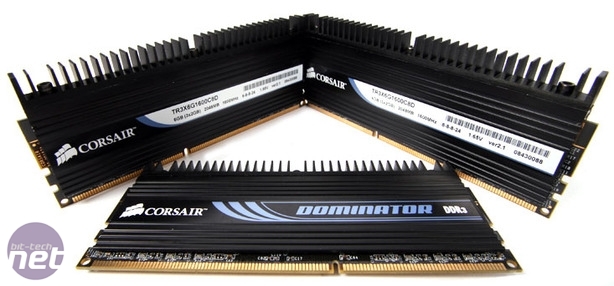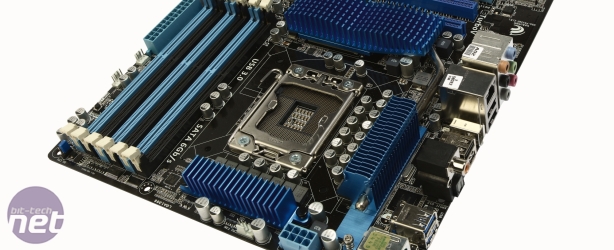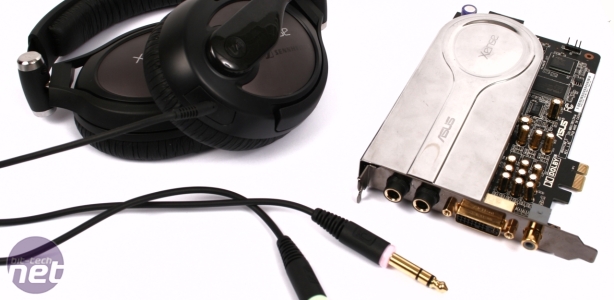PC Hardware Buyer's Guide August 2010
August 9, 2010 | 09:26

Premium Player August 2010
When only the best will do, there’s a great choice of hardware out there to cater for your needs, providing premium performance for a premium price tag. However, even with a high budget, we’re not out to waste money - building a top-end system isn’t as simple as just buying the most expensive components out there and slinging them all together. If you’ve just bought that 24in or 30in monitor, surround sound speaker kit and nice comfy leather chair with footrest (or sub as it's also known) and are looking for some kick-ass performance that won't wait for anyone, this is what we consider the very best hardware at the moment.| Premium Player | |||
| Product | UK Price (inc VAT) | US Price (ex tax) | |
| CPU | 2.8GHz Intel Core i7-930 | £215 | $290 |
| Motherboard | Asus P6X58D-E | £150 | $240 |
| Memory | 6GB 1,600MHz DDR3 | £130 | $145 |
| Graphics Card | 2GB ATI Radeon HD 5970 | £480 | $680 |
| PSU | XFX Black Edition P1-750B-NLG9 | £100 | $130 |
| CPU Cooler | Thermaltake Frio | £35 | $60 |
| Case | Cooler Master ATCS 840 | £145 | $170 |
| Optical drive | SATA DVD-RW | £15 | $20 |
| Storage (HDD) | 1TB Samsung SpinPoint F3 | £60 | $75 |
| Storage (SSD) | Crucial RealSSD C300 128GB | £275 | $265 |
| Misc | HighPoint Rocket 620 | £40 | $35 |
| Sound Card | Asus Xonar DX | £60 | $80 |
| Overall Price: | £1,705 | $2,190 | |
New This Month
While we may have enjoyed playing with the Asus Matrix HD 5870 and Ares cards this month, neither find their way into our most drool-worthy PC. We have updated the graphics card to the gaming powerhouse that is the Radeon HD 5970.This dual-GPU card is the fastest graphics card going, and can power through games even on a 30in screen. If you're not willing to spend quite so much on your card, a £320 HD 5870 is still a very fast card and should handle most games at high resolutions. We're also recommending the Asus P6X58D-E motherboard, though we've finally received the updated Gigabyte GA-X58A-UD3R (rev 2) to re-test - expect updates on the X58 front soon.
If you want something a bit more special to house your LGA1366 CPU, the Asus Rampage III Gene is a great micro-ATX board. It's small size means that it's fine if all you plan to include is a graphics card and a sound card. However, if you want to get the most from that Crucial C300 SSD, you'll need a fast SATA 6Gbps controller, such as the HighPoint Rocket 620 card. We've opted for the 128GB model, which will perform somewhere between the amazing 256GB and the respectably fast 64GB drives.
And The Rest
The choice of which CPU to opt for is always tricky, especially as AMD a range of six-core Phenom II X6 CPUs, while Intel has its quad-core (eight-thread) Core i7 series and its ludicrous six-core (12-thread) Core i7-980X Extreme Edition. The reviews show that the AMD Phenom X6 II 1090T Black Edition just doesn't cut it against the Core i7-930 (let alone the i7-980X) unless you’re doing some highly multi-threaded work in specific applications. For bags of speed in pretty much every department and use, the Core i7-930 is the better bet for around £250.The argument as to whether you should choose a Core i7-920 or an i7-930 continues. We've listed the i7-930 because there's no telling when the cheaper and only slightly less overclockable i7-920 will disappear from the shelves.
While we’d all like to have a i7-980X in our PC, the extra four cores over the i7-930 only help in certain applications – again, heavily multithreaded semi-pro types of use. So, while the CPU is certainly desirable, it’s not actually all that useful for many of us, making the £800-odd asking price too large to swallow.

When it comes to LGA1366, we’d always prefer 6GB of memory over 3GB if possible, so we’ve gone for 6GB of 1,600MHz DDR3 RAM. The relatively high frequency will give us a bit more headroom when it comes to overclocking. For example, if we wanted to aim for a 4GHz overclock we’d use a QPI of 191MHz (as 191 x 21 = 4,011). If we’d opted for 1,333MHz memory, we’d have to use the 6x memory strap with this QPI, which would give us a memory frequency of 1,146MHz, which is a touch slow. With the 1,600MHz memory, we can safely use the 8x memory strap and have our memory run at a more healthy 1,528MHz. We wouldn’t recommend overclocking 1,333MHz memory to 1,528MHz for everyday use unless you really know your DRAM.
 We’ve stuck with the Cooler Master ATCS 840 as our premium case, as it’s minimalist looks and reasonable price make it a bargain. However, you could save some cash by opting for a Fractal Design R2, or really splash out on a non-standard case such as the Lian Li Tyr PC-X1000.
We’ve stuck with the Cooler Master ATCS 840 as our premium case, as it’s minimalist looks and reasonable price make it a bargain. However, you could save some cash by opting for a Fractal Design R2, or really splash out on a non-standard case such as the Lian Li Tyr PC-X1000.For storage, we’ve gone for a single 1TB Samsung SpinPoint F3 hard disk and a 128GB Crucial C300 SSD. Our SSD selection is outlined above. We’d install Windows, games and slow-loading applications to the SSD, and everything else to the Samsung hard disk.
We’ve also added an Asus Xonar DX sound card to avoid conflicts with the Realtek audio codec of the motherboard and enhance the sound generally. If you're really into your audio, you might wan to consider replacing the Asus Xonar DX with the Asus Xonar Xense Audio Bundle. It's finally on sale, three months after we published our review, and at under £200 it's worth looking considering.
Our sister mag Custom PC recently recommended the 750W XFX Black Edition P1-750B-NLG9, which its Premium Grade award (obviously for its price and performance, rather than its name). To quote the review: 'at just over £100, the 750W XFX Black Edition...is great value for money. If you're in the market for a 700-799W PSU then it should be at the top of your shopping list.' We've also changed the CPU cooler to the Thermaltake Frio.
To round things off, there’s a cheap SATA DVD drive. If you haven't got a copy already, you should factor in a copy of Windows 7 - if you're confident that you won't be upgrading much, then an OEM copy should be fine, but serial upgraders need the pricier retail version.

MSI MPG Velox 100R Chassis Review
October 14 2021 | 15:04










Want to comment? Please log in.